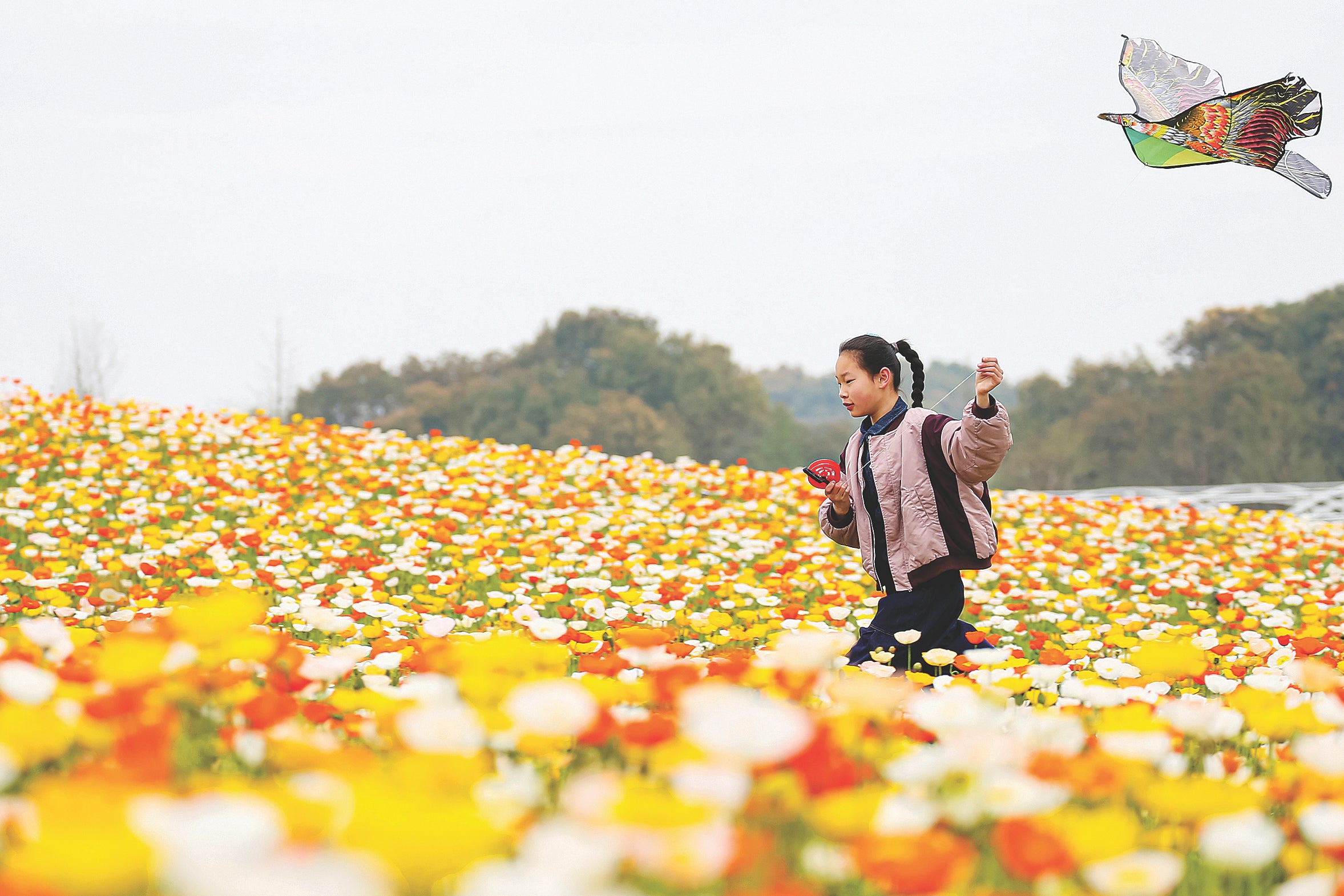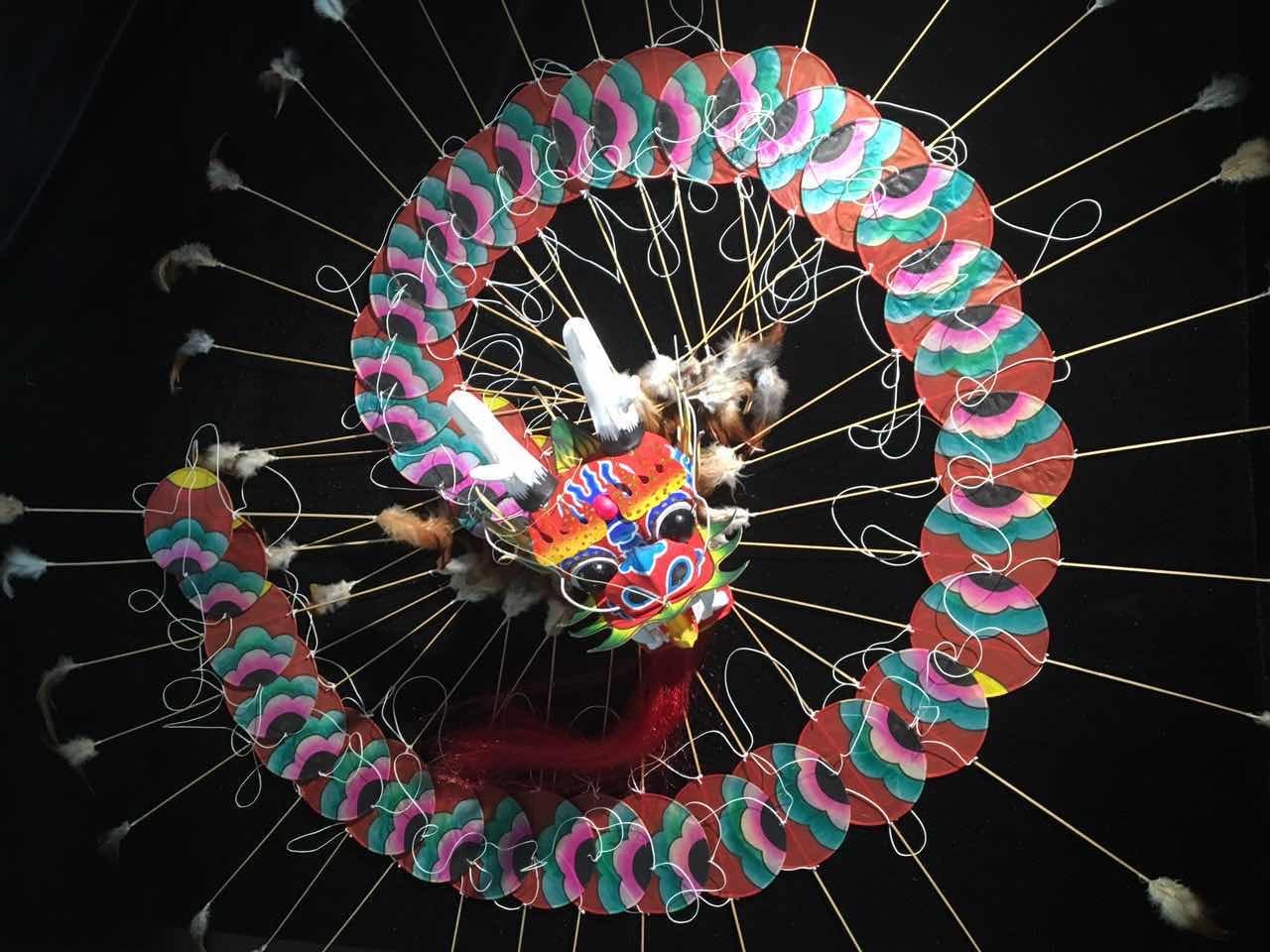Flights of kites
THE ARTICLES ON THESE PAGES ARE PRODUCED BY CHINA DAILY, WHICH TAKES SOLE RESPONSIBILITY FOR THE CONTENTS

Many people hold at least one memory of a kite from their childhoods, be it a simple yet classic diamond or a colourful bird-shaped kind with vividly flapping wings. It could be a sunny spring day in a pastoral landscape with family members. As the wind picks up, the user runs as fast as he or she can, until the kite ascends high into the sky and dances in the air.
However, the kite that Yang Hongwei of Yangjiabu village in Weifang, Shandong province, remembers is slightly different. It was a gigantic dragon-headed centipede that stretched for 1,180 feet and took dozens of people to fly.
That was at the third Weifang International Kite Festival in 1986. To celebrate their village’s legacy of crafting kites, her grandfather, Yang Tongke, and uncle, Yang Qimin, both master kite makers, envisioned and created a model 10 times bigger than any they had ever made.
Weifang is renowned as the “world capital of kites”, and Yangjiabu village has long remained at the heart of local production.
Yang Hongwei, who was born to a family of artisan kite makers in the village in 1966, became a national-level representative inheritor of Weifang kite-making techniques this year.
Yangjiabu is home to two national-level intangible cultural heritage items, kites and Yangjiabu new year pictures, a type of traditional woodblock printing used to decorate people’s homes during Spring Festival.
Both art forms emerged in Yangjiabu in the Ming Dynasty (1368-1644) and prospered in the Qing Dynasty (1644-1911), she says. “Our kites’ decorations draw inspiration from new year pictures, each one carries its own story and auspicious connotations.”
She took a variety of representative Weifang kites to the recent 37th International Kite Festival in Berck-sur-Mer, France, including a dragon-headed centipede kite with images of 100 children. The kite features a dragon head with a body and tail fashioned from about 50 discs, each of which is hand-painted with images of children, carrying wishes for longevity, prosperity and other blessings.
“Throughout history kites have been close to people’s daily lives and influenced by folk traditions,” says Ma Zhiyao, a professor at Tianjin University who specialises in folklore and intangible cultural heritage.
Kites’ origins can be traced back to the late Spring and Autumn Period (770-476 BC), with historical accounts attributing their invention to the philosopher Mozi, who spent three years crafting a wooden hawk, which is considered a prototype for today’s kites. Later, Lu Ban, a master carpenter and engineer, made improvements by substituting wood with bamboo.
During the Eastern Han Dynasty (25-220) the inventor Cai Lun improved papermaking techniques, leading to the invention of “paper hawks”, which resembled the kites we know today.

“Kites’ origins reveal the remarkable ability and creativity of ancient Chinese to imitate nature and explore its mysteries,” Ma says. “They observed birds and thought of using wood and paper to make objects that could soar in the sky. They were driven by curiosity and a spirit of scientific exploration to understand and harness the power of wind.”
During the Tang Dynasty (618-907) relative stability and prosperity made paper more affordable, and kites became part of ordinary people’s lives. As kite-making techniques became more refined, varieties adorned with imagery and that produced sound effects were developed.
In this period, too, kite flying during festivals became a custom. The late Tang-era poet Luo Yin wrote prose about a kite flying on the Cold Food Festival, which then fell directly before the springtime Tomb Sweeping Day and was later merged with it.
The custom was popularised in the Song Dynasty (960-1279). By the Ming and Qing dynasties, significant progress was continuing in design, style, production, decoration and flying skills.
“From an item as modest as a kite, we can see Chinese people’s attachment to the cultural values associated with happiness, positivity and health. This is why the thin string linking us to kites and culture has endured until today and remains a cherished part of contemporary life,” Ma says.
Subscribe to Independent Premium to bookmark this article
Want to bookmark your favourite articles and stories to read or reference later? Start your Independent Premium subscription today.
